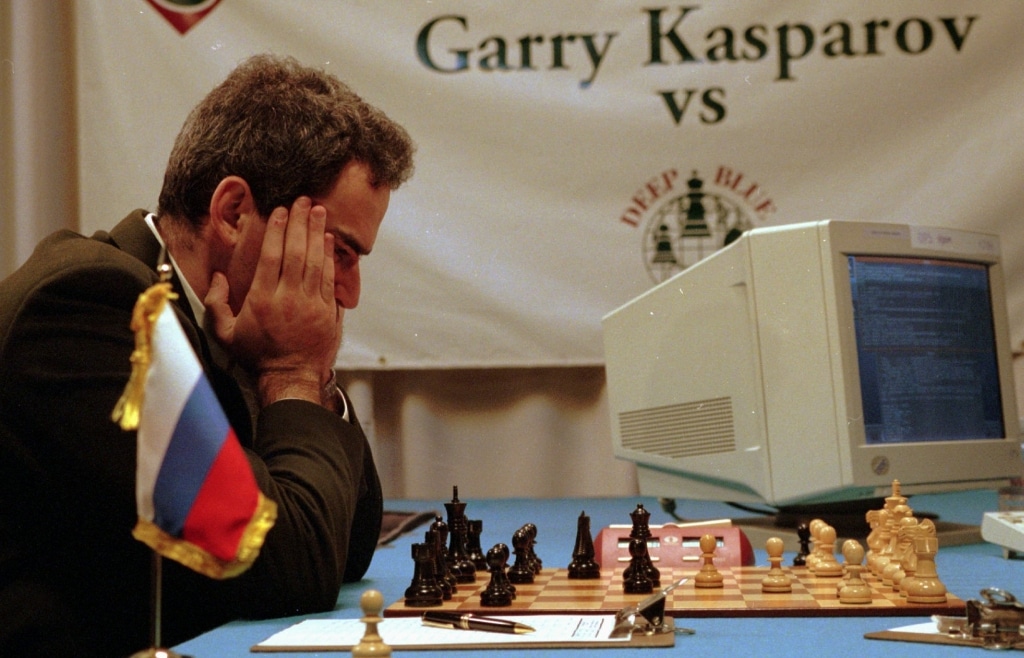906
The Deep_Blue chess computer was released in 1996 and competed against the then world champion Garry Kasparov in the same year
How Deep_Blue conquered the chess world
The development of Deep_Blue began in 1989 and ended in 1996. In the same year, the supercomputer developed by IBM competed against the then world chess champion Garri Kasparov. This event has changed chess to this day.
- There were different versions of Deep_Blue, Kasparov competed against the first two. The first tournament against the first version took place in 1996, the second tournament in 1997 against the second version.
- Deep_Blue was equipped with enormous power by the standards of the time. The first version had 36 nodes and 216 processors, the second 30 nodes and 480 processors. Each of these nodes could call up 1 gigabyte of RAM and 4 gigabytes of hard disk space. For comparison: an average computer in 1996 only had 8 to 16 megabytes of RAM (1 gigabyte = 1000 megabytes) and 500 megabytes to 2 gigabytes of hard disk space.
- The first version of Deep_Blue defeated Kasparov 4:2 in 1996. He won three games against the computer, drew twice and lost once.
- The second version of Deep_Blue had even more powerful hardware and won a tournament against a world chess champion under tournament conditions for the first time in human history.
- The tournament ended with a score of 3.5:2.5. The 1997 version of Deep_Blue could calculate up to 200 million different positions per minute.
How chess computers have evolved
Chess computers have a long history of development behind them and, as is typical of technology, they can improve massively in just a few years.
- In 1985, Kasparov once played against 32 chess computers simultaneously and won every game.
- The most important resource of a chess computer is computing power. The computer analyzes the board and then calculates which moves have which probabilities of winning. The more computing power, the more moves a computer can calculate in the same amount of time
- However, a chess computer does not learn from this, it does not develop further. Things have changed in the meantime. Nowadays, chess computers work with neural networks. These are also used, for example, in artificial intelligence systems such as ChatGPT.
- AlphaZero is a chess computer based on neural networks. This computer was only programmed with the rules of chess and then allowed to play against itself. It recognized patterns, improved itself and after just a few hours was able to win against the best chess program to date, which was still playing according to the “traditional” method.
- In the meantime, humans no longer stand a chance against chess computers because of this.

